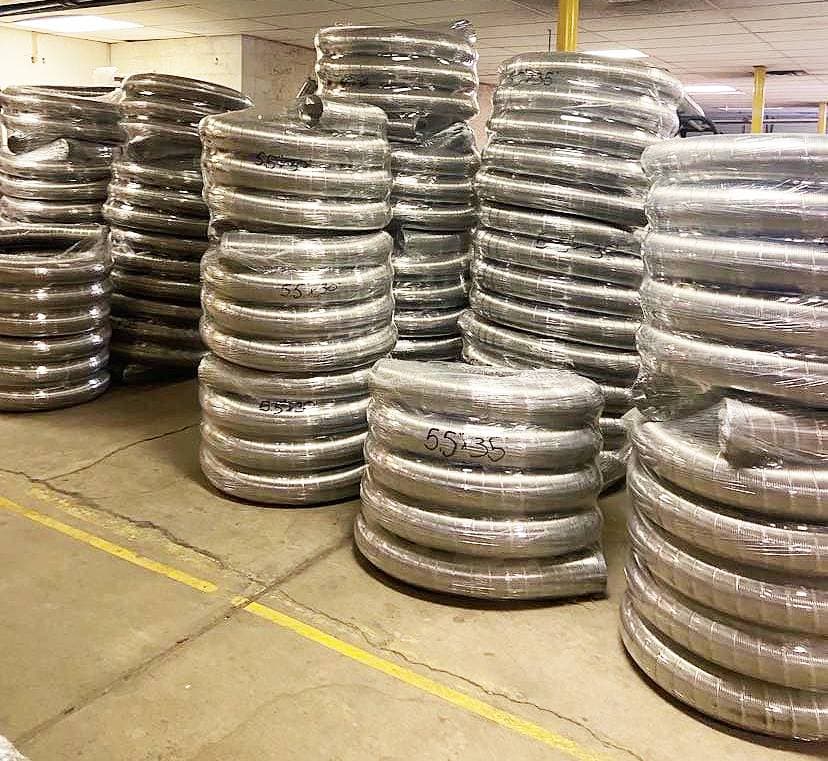Back to Blogs
15 Common Problems in Chimney Flue Liner Installation and How to Avoid Them
December 1, 2023

1. Incorrect Sizing:
– Problem: Choosing the wrong size flue liner can result in poor draft and inefficient venting.
– Solution: Consult with a professional to determine the appropriate flue liner size based on your appliance and chimney dimensions.
2. Poor Installation Techniques:
– Problem: Improper installation methods can lead to gaps, cracks, or misalignment in the flue liner.
– Solution: Hire experienced chimney professionals with a proven track record in flue liner installation.
3. Inadequate Insulation:
– Problem: Lack of proper insulation may cause condensation, leading to corrosion and reduced liner lifespan.
– Solution: Ensure the flue liner is adequately insulated to prevent moisture-related issues.
4. Creosote Buildup:
– Problem: Insufficient drafting can contribute to creosote buildup, posing a fire hazard.
– Solution: Regularly inspect and clean the flue liner to prevent creosote accumulation.
5. Cracked Flue Tiles:
– Problem: Thermal stress or improper handling during installation can cause flue tiles to crack.
– Solution: Handle flue tiles with care during installation, and consider using flexible stainless steel liners to minimize the risk.
6. Corrosion Issues:
– Problem: Corrosion can occur due to moisture or acidic byproducts from combustion.
– Solution: Opt for high-quality, corrosion-resistant materials, and address any leaks promptly to prevent further damage.
7. Lack of a Rain Cap:
– Problem: Without a rain cap, water can enter the chimney, causing damage to the flue liner.
– Solution: Install a rain cap to protect the flue liner from water infiltration.
8. Faulty Masonry Connections:
– Problem: Poorly connected flue liners to the masonry can lead to leaks and reduced efficiency.
– Solution: Ensure a secure and tight connection between the flue liner and the chimney masonry.
9. Incorrect Material Selection:
– Problem: Choosing the wrong material for the flue liner can result in compatibility issues and reduced durability.
– Solution: Select a flue liner material that suits the specific requirements of your heating appliance and chimney.
10. Insufficient Clearance:
– Problem: Inadequate clearance between the flue liner and combustible materials can pose a fire risk.
– Solution: Adhere to recommended clearances and building codes during installation.
11. Neglecting Local Codes:
– Problem: Ignoring local building codes and regulations can lead to legal and safety issues.
– Solution: Familiarize yourself with and adhere to local codes, or hire professionals who are knowledgeable about them.
12. Ignoring Regular Inspections:
– Problem: Neglecting routine inspections can result in undetected issues that may worsen over time.
– Solution: Schedule regular chimney inspections to identify and address any potential problems promptly.
13. Poor Drafting Design:
– Problem: Inadequate drafting design can lead to inefficient combustion and poor appliance performance.
– Solution: Consult with experts to design an effective drafting system tailored to your specific chimney and appliance.
14. Incomplete Sealing:
– Problem: Incomplete or improper sealing of joints can lead to leaks and energy loss.
– Solution: Ensure all joints are properly sealed using appropriate materials to prevent air and gas leakage.
15. DIY Installation Pitfalls:
– Problem: DIY installations without proper knowledge and experience can result in various issues.
– Solution: Hire qualified professionals to handle the installation, ensuring safety and compliance with standards.
Avoiding these common problems in chimney flue liner installation requires careful consideration, adherence to codes, and the expertise of professionals. By investing time and resources in a well-planned installation, you can enjoy a safe, efficient, and long-lasting chimney system for years to come.
